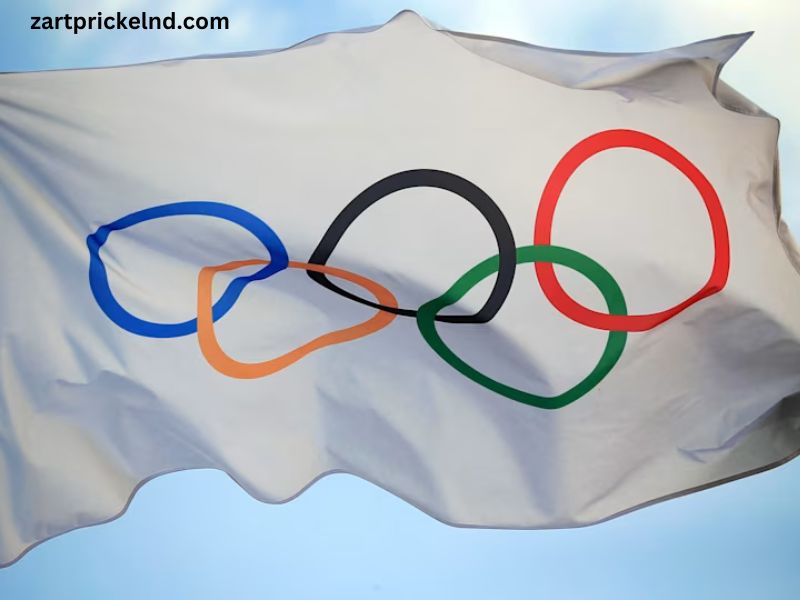The Summer Olympics, a global sports festival that occurs every four years, is one of the most anticipated events in the world of sports. Athletes from around the globe gather to compete in a wide variety of disciplines, each showcasing their unique skills, determination, and sportsmanship. The modern Summer Olympics, also known as the Games of the Olympiad, have evolved significantly since their inception in 1896, with new sports being added and others being removed over time. The event now includes a rich array of sports, catering to a diverse audience. This article will delve into the various sports featured in the Summer Olympics, offering a comprehensive overview of the athletic competitions that captivate millions worldwide.
The Core Sports of the Summer Olympics
The Summer Olympics feature a wide range of sports, each with its own history, set of rules, and global following. These sports can be broadly categorized into different types based on the nature of the competition, such as athletics, aquatics, ball sports, combat sports, and more.
1. Athletics
Athletics is often considered the heart of the Summer Olympics, encompassing a wide range of events that test the limits of human speed, strength, and endurance. The athletics category includes track and field events, road running, and race walking. Some of the most iconic Olympic moments have occurred on the athletics track, with events like the 100-meter sprint, the marathon, and the long jump capturing the imagination of sports fans worldwide. The athletics program includes:
- Track Events: Races of various distances, including sprints (100m, 200m, 400m), middle-distance (800m, 1500m), long-distance (5000m, 10,000m), and relay races (4x100m, 4x400m).
- Field Events: Competitions in jumping (long jump, high jump, triple jump, pole vault) and throwing (shot put, discus, javelin, hammer throw).
- Combined Events: The decathlon (men) and heptathlon (women) test athletes across multiple disciplines.
2. Aquatics
Aquatics sports are another cornerstone of the Summer Olympics, with swimming, diving, water polo, and artistic swimming drawing large audiences. These sports showcase the physical prowess and precision of athletes in water-based competitions.
- Swimming: Athletes compete in various strokes—freestyle, backstroke, breaststroke, and butterfly—over different distances. Relays and individual medley events also feature prominently.
- Diving: Athletes perform acrobatic dives from platforms or springboards, judged on their execution and degree of difficulty.
- Water Polo: A team sport that combines elements of swimming and soccer, with teams aiming to score goals in the opposing team’s net.
- Artistic Swimming: A combination of swimming, dance, and gymnastics, performed in teams or duets to music.
3. Gymnastics
Gymnastics is one of the most visually stunning and technically challenging sports in the Summer Olympics. It is divided into three main disciplines:
- Artistic Gymnastics: Athletes perform on various apparatus, including the floor, pommel horse, rings, vault, parallel bars, and horizontal bar for men; and vault, uneven bars, balance beam, and floor for women.
- Rhythmic Gymnastics: A sport where athletes (women only) perform routines with apparatus such as ribbons, hoops, balls, clubs, and ropes.
- Trampoline: Athletes perform acrobatic routines on a trampoline, judged on height, complexity, and execution.
4. Team Sports
The Summer Olympics also feature several popular team sports, each with its own unique set of rules and global following.
- Basketball: Both men’s and women’s tournaments are held, featuring teams from around the world competing in a fast-paced game of strategy and skill.
- Soccer (Football): One of the most widely watched sports globally, the Olympic soccer tournament features national teams competing for the gold medal.
- Volleyball: Includes both indoor and beach volleyball, with teams competing to spike, block, and dig their way to victory.
- Handball: A team sport combining elements of soccer and basketball, where players aim to score goals by throwing a ball into the opposing team’s net.
- Rugby Sevens: A fast-paced, shortened version of rugby union, played with seven players per side instead of the usual 15.
5. Combat Sports
Combat sports have a rich history in the Olympic Games, with many of these disciplines dating back to the ancient Olympics.
- Boxing: Athletes compete in weight classes, engaging in three-round bouts judged on technique, defense, and aggression.
- Wrestling: Includes two styles—freestyle and Greco-Roman—where athletes aim to pin their opponents or score points through takedowns and holds.
- Judo: A martial art focused on throws, holds, and submissions, where athletes compete in weight divisions.
- Taekwondo: A Korean martial art that emphasizes high kicks and fast strikes, with athletes scoring points for successful techniques.
6. Racket Sports
Racket sports add a dynamic and fast-paced element to the Summer Olympics, with intense competition and global fanbases.
- Tennis: Features men’s and women’s singles and doubles, as well as mixed doubles, with top players from around the world competing on a variety of surfaces.
- Table Tennis: A fast-paced game that requires quick reflexes and precision, with events for singles and doubles.
- Badminton: A racket sport played with a shuttlecock, featuring singles, doubles, and mixed doubles events.
7. Cycling
Cycling is a versatile sport in the Olympics, with several different disciplines testing endurance, speed, and strategy.
- Road Cycling: Includes road races and time trials, with cyclists competing over long distances on varied terrain.
- Track Cycling: Takes place on a velodrome, with events such as sprints, pursuits, and keirin.
- Mountain Biking: Athletes compete on rugged, off-road courses that test their technical skills and endurance.
- BMX Racing: A fast-paced, sprint-style race on dirt tracks with jumps and tight turns.
8. Equestrian
Equestrian sports in the Olympics are unique in that they involve both human and animal athletes. The three main disciplines are:
- Dressage: Often described as “horse ballet,” where riders guide their horses through a series of precise movements.
- Eventing: A combined competition of dressage, cross-country, and show jumping, testing the versatility of horse and rider.
- Show Jumping: Riders guide their horses over a series of obstacles, aiming for a clean round with no faults.
9. Shooting
Shooting sports test athletes’ precision and control, with events in both rifle and pistol disciplines, as well as shotgun.
- Rifle: Includes events like the 10m air rifle and 50m rifle, where athletes shoot at targets from a fixed position.
- Pistol: Events such as the 10m air pistol and 25m rapid fire pistol, where accuracy and speed are key.
- Shotgun: Includes trap and skeet shooting, where athletes aim at moving clay targets.
10. Water Sports
Beyond the traditional swimming and diving, the Olympics also feature other water-based sports that test speed, endurance, and teamwork.
- Canoeing/Kayaking: Includes both slalom and sprint events, where athletes navigate whitewater courses or race over calm water.
- Rowing: A sport where teams or individuals race in boats, using oars to propel themselves over a set distance.
- Sailing: Athletes compete in different classes of boats, with races taking place on open water, testing their sailing skills and strategy.
11. Other Olympic Sports
The Olympics also include a variety of other sports, each adding its own flavor to the Games.
- Fencing: A combat sport where athletes duel with swords (foil, épée, or sabre), aiming to score touches on their opponent.
- Archery: Athletes use bows to shoot arrows at a target, with points awarded based on accuracy.
- Weightlifting: Athletes compete to lift the heaviest weights in two lifts: the snatch and the clean and jerk.
- Modern Pentathlon: A multi-sport event that includes fencing, swimming, equestrian show jumping, and a combined event of pistol shooting and cross-country running.
- Triathlon: A race that combines swimming, cycling, and running, testing the endurance and versatility of the athletes.
- Golf: Reintroduced to the Olympics in 2016, where golfers compete over 72 holes for the lowest score.
- Skateboarding: Debuted in 2020, with athletes competing in street and park events, showcasing their skills and creativity.
- Surfing: Another new addition in 2020, where surfers compete on natural waves, judged on their technique and style.
Conclusion
The Summer Olympics are a celebration of the diverse and extraordinary talents of athletes from around the world. Each sport in the Games contributes to the overall excitement and grandeur of the event, offering something for every type of sports fan. From the precision of archery to the endurance of the marathon, the power of weightlifting to the grace of gymnastics, the Summer Olympics represent the pinnacle of human athletic achievement. Whether you are a fan of traditional sports like track and field or newer additions like skateboarding, the Olympics provide an unparalleled spectacle of skill, dedication, and the unifying spirit of competition



